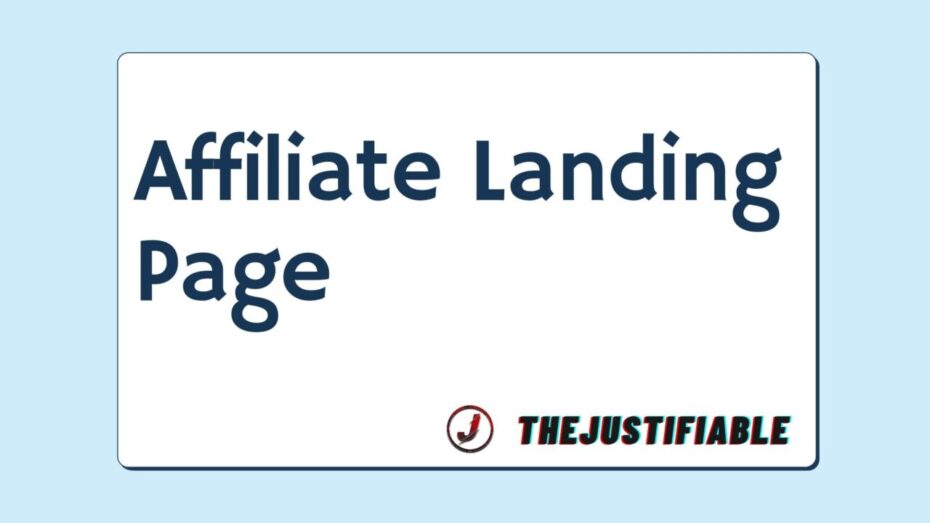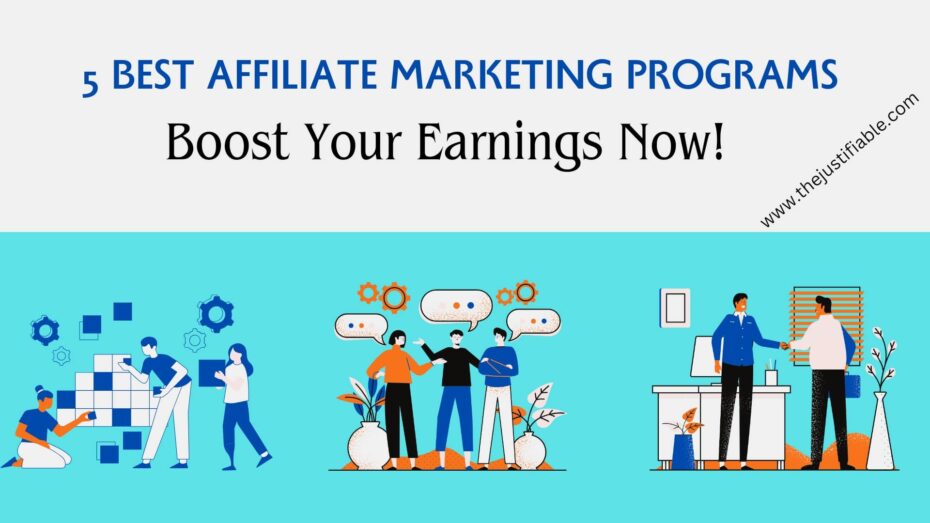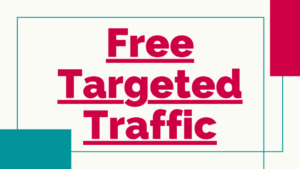Table of Contents
An affiliate landing page is a critical tool for driving leads and conversions. By optimizing your affiliate landing page, you can significantly boost your lead generation efforts, ensuring maximum efficiency and profitability.
Key Elements of a High-Converting Affiliate Landing Page
A high-converting affiliate landing page is essential for maximizing your lead generation and conversion rates. By focusing on key elements, you can ensure your landing page not only attracts visitors but also persuades them to take action.
Effective landing pages often begin with a compelling headline. A headline that captures attention immediately sets the tone for the visitor’s experience. Additionally, clear and concise calls to action guide users towards the desired outcome, ensuring they know exactly what steps to take next.
Affiliate Programs Recommendations
FlexOffers
| MyLead
| ShareASale
|
Compelling Headline to Capture Attention
The headline is the first thing visitors see on your affiliate landing page. A compelling headline should be clear, concise, and directly address the needs or pain points of your target audience. By doing this, you can instantly grab their attention and make them want to learn more.
To create an effective headline, focus on the benefits your offer provides. Use powerful words that evoke curiosity and urgency. For example, a headline like “Unlock Exclusive Discounts on Top Products” immediately tells the visitor what they can gain by staying on the page.
Remember, the headline should be prominent and visually appealing. Using a larger font size, bold text, and contrasting colors can make it stand out even more. This way, your visitors will be drawn in right from the start.
Another tip is to test different headlines to see which one performs best. A/B testing can provide valuable insights into what resonates most with your audience, allowing you to optimize your headline for maximum impact.
Clear and Concise Call to Action
A clear and concise call to action (CTA) is crucial for guiding visitors towards conversion. Your CTA should be straightforward, easy to understand, and prominently displayed on your affiliate landing page.
When crafting your CTA, use action-oriented language that encourages visitors to take immediate steps. Phrases like “Get Started Now,” “Claim Your Discount,” or “Download Free Guide” are effective because they tell users exactly what to do next.
Placement is also key. Ensure your CTA is located in a visible spot on your landing page, such as above the fold or near the top. This way, visitors don’t have to scroll to find it, increasing the chances of them taking action.
Additionally, consider using contrasting colors for your CTA button to make it stand out from the rest of the page. This visual cue can draw attention and prompt users to click.
Lastly, keep your CTA short and to the point. A concise message reduces friction and makes it easier for visitors to understand what they need to do, ultimately boosting your conversion rates.
Trust-Building Testimonials and Reviews
Including trust-building testimonials and reviews on your affiliate landing page can significantly enhance its credibility. When potential customers see positive feedback from others, they are more likely to trust your offer and proceed with the conversion.
Select testimonials that highlight specific benefits or results achieved by previous customers. Authenticity is key, so use real names and, if possible, include photos to make the testimonials more relatable.
To maximize the impact of testimonials, place them strategically on your landing page. Positioning them near your CTA or in a dedicated section can reinforce the decision-making process for your visitors.
In addition to written testimonials, consider incorporating video reviews. Video content can be more engaging and provide a stronger emotional connection, further building trust with your audience.
Encouraging your customers to leave reviews and feedback can also help keep your testimonials fresh and up-to-date. Regularly updating this section shows that your product or service continues to deliver value over time.
Persuasive and Benefit-Driven Copy
Persuasive and benefit-driven copy is essential for convincing visitors to take action on your affiliate landing page. Focus on highlighting the unique advantages and positive outcomes that your offer provides.
Start by identifying the key pain points or desires of your target audience. Then, craft your copy to address these needs directly. Use language that speaks to the benefits, such as “Save time and money,” “Achieve your goals faster,” or “Experience unparalleled quality.”
To keep your copy engaging, break it into short, digestible paragraphs and use bullet points to highlight key benefits. This format makes it easier for visitors to quickly understand the value you’re offering.
Including data and statistics can also strengthen your copy. For example, “Join over 10,000 satisfied customers who have doubled their productivity” adds credibility and emphasizes the widespread success of your offer.
Finally, maintain a conversational tone throughout your copy. Speaking directly to your audience in a friendly and relatable manner can make your landing page more engaging and persuasive.
Eye-Catching and Relevant Images
Eye-catching and relevant images play a crucial role in enhancing the appeal of your affiliate landing page. High-quality visuals can capture attention, convey important information, and create an emotional connection with your visitors.
Choose images that are directly related to your offer and that illustrate its benefits. For example, if you’re promoting a fitness product, images of people using the product and achieving great results can be very effective.
Make sure your images are high resolution and professionally done. Poor-quality visuals can detract from your credibility and make your landing page look unprofessional.
Incorporating infographics and icons can also help break up text and make your content more visually appealing. Infographics can simplify complex information, making it easier for visitors to understand the key points.
Additionally, consider using images of real people to create a more personal connection with your audience. Authentic photos of satisfied customers or your team can add a human touch to your landing page.
Optimized Form Fields for Maximum Conversions
Optimized form fields are essential for capturing leads effectively on your affiliate landing page. Simplifying your form and making it user-friendly can significantly increase your conversion rates.
Start by asking for only the most necessary information. The fewer fields you include, the more likely visitors are to complete the form. Essential fields typically include name and email address, but you can customize this based on your needs.
Use clear and concise labels for each field to avoid any confusion. For example, instead of just “Name,” use “First Name” and “Last Name” to be more specific.
Consider using inline validation to provide immediate feedback if users make errors while filling out the form. This can help reduce frustration and improve the user experience.
Additionally, place your form in a prominent location on your landing page, such as near the top or alongside compelling content. This ensures that visitors see it without having to search.
Lastly, test different form layouts and lengths to find the optimal balance for your audience. A/B testing can provide insights into which configurations yield the highest conversion rates.
Best Practices for Designing Affiliate Landing Pages
Designing an effective affiliate landing page is crucial for maximizing conversions and driving leads. By following best practices, you can ensure your affiliate landing page performs optimally, providing a seamless user experience that encourages visitors to take action.
One of the key aspects of designing a successful affiliate landing page is to make it visually appealing and easy to navigate. A clean, uncluttered design helps focus the visitor’s attention on the primary message and call to action. Additionally, integrating trust signals like security badges and customer testimonials can significantly boost credibility and conversion rates.
Mobile-Friendly and Responsive Design
A mobile-friendly and responsive design is essential for any affiliate landing page. With the majority of users accessing the internet via mobile devices, ensuring your landing page looks and functions well on all screen sizes is critical. A responsive design adjusts the layout and elements based on the device being used, providing an optimal viewing experience.
To achieve a mobile-friendly design, use a responsive framework like Bootstrap or CSS media queries. These tools allow your page to adapt seamlessly to different screen sizes. Ensure that buttons and links are easily tappable, and that text is readable without requiring zooming.
Another important aspect is to minimize the use of large images and heavy scripts that can slow down the page load time on mobile devices. Fast loading times are crucial for retaining mobile users, who are often impatient and quick to abandon slow-loading pages.
Additionally, test your affiliate landing page on various devices and browsers to ensure compatibility and functionality. This helps identify any issues that may affect the user experience and allows you to make necessary adjustments.
Fast Loading Speed for Better User Experience
Fast loading speed is a vital component of a successful affiliate landing page. A slow-loading page can frustrate visitors and lead to high bounce rates, negatively impacting your conversion rates. To ensure a smooth user experience, focus on optimizing your page’s loading speed.
One effective way to improve loading speed is by compressing images and other media files. Use tools like TinyPNG or ImageOptim to reduce file sizes without compromising quality. Additionally, leverage browser caching to store commonly used files locally on the user’s device, reducing the need for repeated downloads.
Minimizing the use of heavy scripts and plugins can also enhance loading speed. Limit the number of third-party scripts and use asynchronous loading for those that are necessary. This ensures that scripts do not block the rendering of other elements on the page.
Consider using a Content Delivery Network (CDN) to distribute your content across multiple servers worldwide. CDNs cache your content and deliver it from the server closest to the user, reducing latency and improving load times.
Finally, regularly monitor your page’s performance using tools like Sitechecker or Serpstat. These tools provide valuable insights and recommendations for optimizing your page’s speed and overall performance.
A/B Testing to Optimize Performance
A/B testing is a powerful method for optimizing the performance of your affiliate landing page. By comparing two versions of a page with slight variations, you can determine which version performs better in terms of conversions and user engagement.
Start by identifying key elements to test, such as headlines, images, CTAs, and layout. Create two versions of your landing page with one variation between them. For example, you could test two different headlines to see which one resonates more with your audience.
Use an A/B testing tool like Google Optimize or Optimizely to split your traffic between the two versions and track their performance. Analyze the results to determine which version achieves higher conversion rates and make data-driven decisions to implement the winning variation.
It’s important to test only one element at a time to isolate its impact on performance. This approach ensures that you accurately identify the factors contributing to improved conversions.
Regularly conducting A/B tests allows you to continually refine and enhance your affiliate landing page, ensuring it remains effective and aligned with your audience’s preferences and behaviors.
Utilizing Analytics to Track Conversions
Utilizing analytics is essential for tracking the performance of your affiliate landing page and identifying areas for improvement. By analyzing data, you can gain valuable insights into user behavior and optimize your page for better conversions.
Set up tracking with tools like Kissmetrics or Hotjar to monitor key metrics such as bounce rate, average session duration, and conversion rate. These metrics provide a comprehensive view of how users interact with your landing page.
Analyze the data to identify patterns and trends. For example, if you notice a high bounce rate on a particular section of the page, it may indicate that users are not finding the content relevant or engaging. Use this insight to make necessary adjustments and improve the user experience.
Additionally, track the source of your traffic to understand which channels are driving the most conversions. This information can help you allocate your marketing resources more effectively and focus on the channels that yield the highest return on investment.
Regularly reviewing and analyzing your analytics data allows you to make informed decisions and continually optimize your affiliate landing page for maximum performance and conversions.
Optimizing Affiliate Landing Pages for SEO
Optimizing your affiliate landing page for SEO is crucial for driving organic traffic and improving your search engine rankings. By incorporating best practices and focusing on key elements, you can enhance your page’s visibility and attract more visitors.
Effective SEO optimization begins with incorporating relevant keywords naturally throughout your content. This helps search engines understand the context of your page and rank it accordingly. Additionally, on-page SEO techniques such as optimizing meta descriptions and titles play a significant role in improving your page’s search engine performance.
SEO Services Recommendations
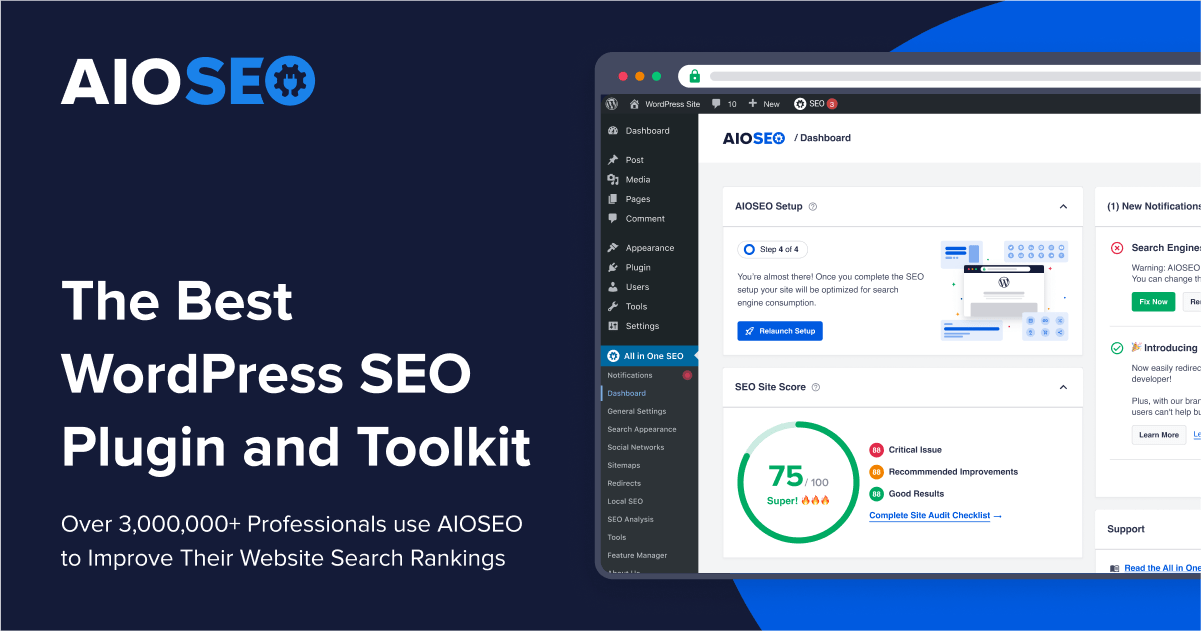 AIOSEO
| 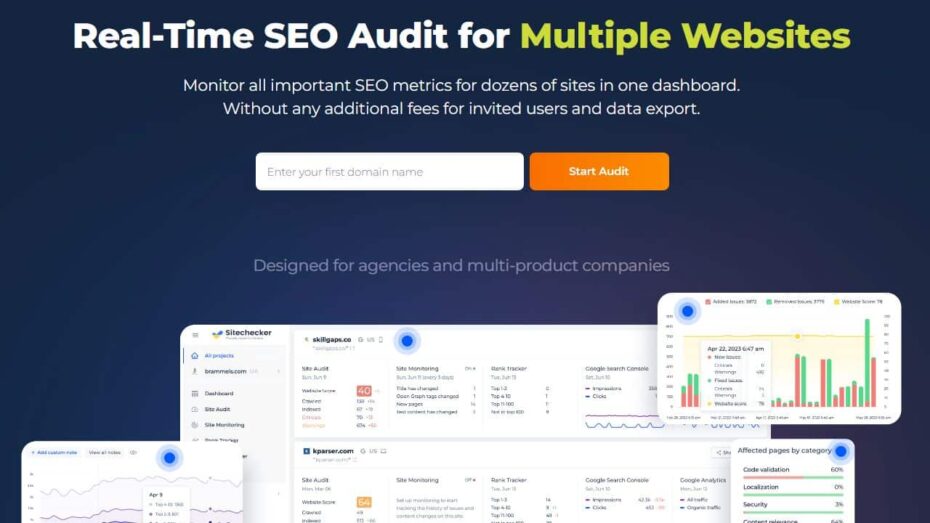 Sitechecker
| 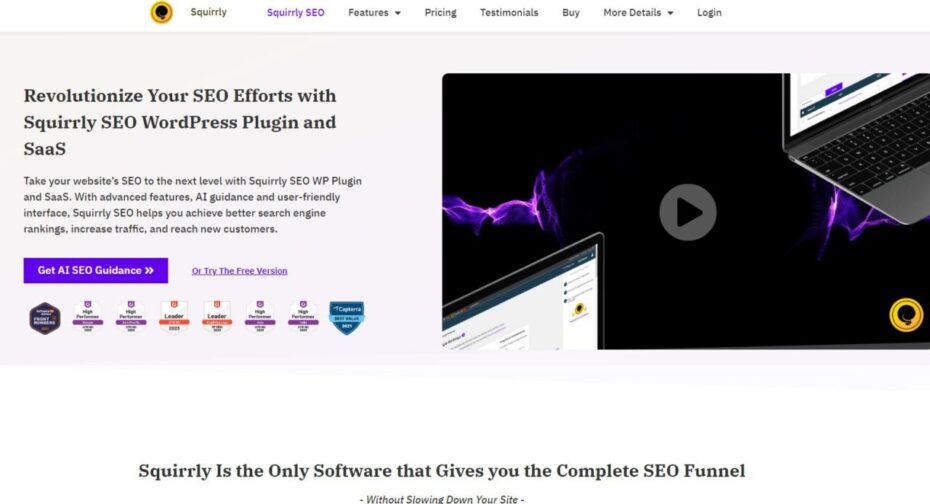 Squirrly
|
Incorporating Keywords Naturally
Incorporating keywords naturally into your affiliate landing page content is essential for SEO success. Keywords help search engines understand the topic and relevance of your page, improving its chances of ranking higher in search results.
Start by identifying primary and related keywords that are relevant to your offer. Use tools like SEOpowersuite or Semrush to find keywords with high search volume and low competition. Once you have your keywords, integrate them naturally into your content without overstuffing.
Focus on placing keywords in strategic locations such as the headline, subheadings, and first paragraph. This ensures that search engines can quickly identify the main topic of your page. Additionally, use variations and synonyms of your primary keyword to create a more natural flow.
Ensure that your content remains reader-friendly and engaging. Keyword stuffing can lead to a poor user experience and may result in search engine penalties. Aim for a balance between SEO optimization and providing valuable information to your audience.
Regularly review and update your keyword strategy based on performance and changes in search trends. This helps maintain the relevance and effectiveness of your SEO efforts over time.
On-Page SEO Techniques
On-page SEO techniques are critical for optimizing your affiliate landing page and improving its search engine rankings. By focusing on key elements, you can enhance your page’s visibility and attract more organic traffic.
Start by optimizing your meta title and description. The meta title should be concise and include your primary keyword, while the meta description should provide a brief summary of your page’s content and entice users to click through. Both elements play a significant role in influencing click-through rates from search engine results pages.
Use header tags (H1, H2, H3) to structure your content and highlight important sections. Incorporate keywords naturally into these headers to signal relevance to search engines. Additionally, ensure that your URL is clean and includes the primary keyword.
Optimize your images by using descriptive file names and alt text. This helps search engines understand the content of your images and improves accessibility for users with visual impairments. Compress images to reduce load times, enhancing both user experience and SEO performance.
Finally, ensure your page is mobile-friendly and has a fast loading speed. Search engines prioritize mobile-friendly websites, and a fast-loading page improves user experience, leading to higher rankings and better conversion rates.
The Role of Meta Descriptions and Titles
Meta descriptions and titles play a crucial role in SEO by influencing how your affiliate landing page appears in search engine results. These elements provide a snapshot of your page’s content and impact click-through rates.
The meta title is the first thing users see in search results, so it should be compelling and include your primary keyword. Aim for a length of 50-60 characters to ensure it displays fully in search results. A well-crafted meta title can significantly increase the likelihood of users clicking on your link.
The meta description provides a brief summary of your page’s content and should be between 150-160 characters. It should include relevant keywords and provide a clear value proposition to entice users to click. A strong meta description can improve your click-through rate and drive more traffic to your landing page.
Ensure that each page on your website has a unique meta title and description. This helps avoid duplication issues and ensures that each page is accurately represented in search results.
Regularly review and update your meta titles and descriptions based on performance and changes in search trends. This ongoing optimization helps maintain the relevance and effectiveness of your SEO efforts.
How to Craft Irresistible Offers for Affiliate Landing Pages
Crafting irresistible offers for affiliate landing pages is essential for capturing the attention of your target audience and driving conversions. By understanding what motivates your visitors and presenting compelling incentives, you can significantly increase the effectiveness of your affiliate marketing efforts.
A successful offer starts with a deep understanding of your target audience. Knowing their preferences, pain points, and desires allows you to tailor your offer to meet their specific needs. Additionally, providing high-value incentives and creating a sense of urgency can make your offer even more appealing, encouraging visitors to take immediate action.
Understanding Your Target Audience
To create an irresistible offer, you first need to understand your target audience. This involves researching their demographics, behaviors, and preferences. By gathering insights into what motivates them, you can tailor your offer to address their specific needs and desires.
Begin by analyzing data from your website, social media, and other marketing channels. Look for patterns in user behavior, such as which pages they visit most frequently and what types of content they engage with. This information can help you identify what your audience values and what they might be looking for in an offer.
Next, create detailed buyer personas that represent your ideal customers. These personas should include information about their age, gender, interests, pain points, and purchasing behaviors. Use these personas to guide your offer creation process, ensuring that your incentives and messaging resonate with your target audience.
Engage with your audience directly through surveys, polls, and social media interactions. Ask them about their preferences and what types of offers they find most appealing. This direct feedback can provide valuable insights and help you refine your offer to better meet their needs.
Offering High-Value Incentives
High-value incentives are a key component of any irresistible offer. These incentives should provide tangible benefits that appeal to your target audience and motivate them to take action on your affiliate landing page.
Consider offering discounts, free trials, or exclusive access to premium content. These types of incentives can be highly effective in attracting visitors and encouraging them to convert. For example, a limited-time discount on a popular product can create a sense of urgency and drive immediate sales.
Another strategy is to bundle products or services together to increase perceived value. For instance, if you are promoting a software product, you could offer a free eBook or access to a webinar as part of the package. This adds value and makes the overall offer more attractive to potential customers.
Make sure your incentives are clearly communicated on your landing page. Use compelling headlines and concise descriptions to highlight the benefits of your offer. Visual elements, such as images and videos, can also help convey the value of your incentives and make them more appealing to visitors.
Creating Urgency and Scarcity
Creating a sense of urgency and scarcity is a powerful tactic for crafting irresistible offers. When visitors feel that they might miss out on a valuable opportunity, they are more likely to take immediate action.
One way to create urgency is by using time-limited offers. For example, you can offer a discount that is only available for a limited period, such as “50% off for the next 24 hours.” This encourages visitors to act quickly before the offer expires.
Scarcity can be created by limiting the availability of your offer. For instance, you could highlight that only a certain number of products are available at the discounted price, such as “Only 10 items left at this price!” This makes the offer more exclusive and desirable.
Incorporate countdown timers on your landing page to visually represent the time remaining for the offer. This can add a sense of urgency and encourage visitors to make a decision quickly.
Combine urgency and scarcity with persuasive copy that emphasizes the benefits of taking immediate action. Highlight the unique value of your offer and why it is important for visitors to act now rather than later.
Common Mistakes to Avoid on Affiliate Landing Pages
Creating an effective affiliate landing page involves more than just compelling offers. Avoiding common mistakes can significantly improve your conversion rates and ensure a positive user experience. By being aware of these pitfalls, you can optimize your landing page for success.
One major mistake is overwhelming users with too much information. This can lead to confusion and decision paralysis, reducing the likelihood of conversions. Additionally, neglecting mobile optimization can alienate a significant portion of your audience, as more users access websites via mobile devices. Lastly, failing to test and iterate can prevent you from identifying and correcting issues that hinder performance.
Overwhelming Users with Too Much Information
One of the most common mistakes on affiliate landing pages is overwhelming users with too much information. When visitors are bombarded with excessive details, they can become confused and unsure of what action to take, leading to higher bounce rates.
To avoid this, focus on simplicity and clarity. Present the most important information prominently and use concise, straightforward language. Break up text with bullet points, headings, and short paragraphs to make the content more digestible.
Visual elements such as images, infographics, and videos can also help convey information more effectively without overwhelming the user. These elements can highlight key benefits and guide visitors through the content in an engaging way.
Ensure that your call to action (CTA) is clear and easy to find. Avoid cluttering the page with multiple CTAs or competing messages, which can confuse visitors. A single, prominent CTA helps direct users toward the desired action.
Neglecting Mobile Optimization
Neglecting mobile optimization is a critical mistake that can significantly impact the performance of your affiliate landing page. With an increasing number of users accessing the internet via mobile devices, a mobile-friendly design is essential for providing a seamless user experience.
Ensure that your landing page is fully responsive and adapts to different screen sizes. Use a mobile-first design approach, which prioritizes the mobile experience and ensures that all elements are easily accessible on smaller screens.
Optimize images and other media for faster loading times on mobile devices. Large files can slow down your page, leading to higher bounce rates among impatient mobile users. Compress images and use efficient coding practices to improve load times.
Test your landing page on various mobile devices and browsers to identify any issues that may affect usability. Pay attention to touch-friendly navigation, ensuring that buttons and links are easily tappable without requiring zooming.
Failing to Test and Iterate
Failing to test and iterate is a major mistake that can prevent you from optimizing your affiliate landing page for maximum performance. Regular testing allows you to identify issues, understand user behavior, and make data-driven improvements.
Start by conducting A/B tests on different elements of your landing page, such as headlines, images, CTAs, and layouts. This helps determine which variations perform better and why. Use tools like Google Optimize or Optimizely to run these tests and analyze the results.
Collect and analyze data using analytics tools like Google Analytics. Monitor key metrics such as bounce rate, conversion rate, and average session duration to gain insights into user behavior and page performance.
Based on the data, make incremental changes and test their impact. Continuously iterating and refining your landing page ensures that it evolves with user preferences and remains effective over time.
Additionally, gather feedback from users through surveys and usability testing. Understanding their experiences and pain points can provide valuable insights and help guide your optimization efforts.
Analyzing and Improving Affiliate Landing Page Performance
Improving the performance of your affiliate landing page is crucial for maximizing conversions and driving revenue. Analyzing key metrics and utilizing performance analysis tools can provide valuable insights that help refine your strategies and enhance user experience.
Effective analysis begins with identifying the right metrics to monitor. By understanding which aspects of your landing page impact user behavior and conversions, you can make informed decisions to optimize performance. Additionally, continuous improvement strategies ensure that your landing page evolves in response to user feedback and changing market trends.
Key Metrics to Monitor
Monitoring key metrics is essential for understanding the performance of your affiliate landing page. These metrics provide insights into user behavior, engagement, and conversion rates, allowing you to identify areas for improvement.
One of the most important metrics to track is the conversion rate. This metric indicates the percentage of visitors who complete the desired action, such as making a purchase or signing up for a newsletter. A high conversion rate signifies that your landing page effectively persuades visitors to take action.
Another critical metric is the bounce rate, which measures the percentage of visitors who leave your landing page without interacting with it. A high bounce rate may indicate that your page is not engaging or relevant to your audience, necessitating changes to improve user experience.
Time on page and average session duration are also valuable metrics to monitor. These metrics provide insights into how long visitors spend on your landing page, which can indicate their level of engagement and interest in your content.
Finally, track the source of your traffic to understand which channels drive the most visitors to your landing page. This information can help you allocate your marketing resources more effectively and focus on the most profitable channels.
Tools for Performance Analysis
Using the right tools for performance analysis is crucial for gaining actionable insights into your affiliate landing page. These tools can help you monitor key metrics, identify issues, and optimize your page for better results.
Google Analytics is a powerful tool for tracking and analyzing website performance. It provides detailed reports on user behavior, traffic sources, and conversion rates, allowing you to understand how visitors interact with your landing page. By setting up goals and tracking specific events, you can measure the effectiveness of different elements on your page.
Hotjar is another valuable tool that offers heatmaps and session recordings. Heatmaps visually represent where users click and scroll on your landing page, helping you identify which areas receive the most attention. Session recordings allow you to watch how individual users navigate your page, providing deeper insights into their behavior.
A/B testing tools like Optimizely and Google Optimize enable you to compare different versions of your landing page. By testing variations of headlines, images, CTAs, and layouts, you can determine which changes result in higher conversions and improved user experience.
For more advanced analysis, consider using a comprehensive marketing analytics platform like SEMrush or Ahrefs. These tools offer a wide range of features, including keyword tracking, competitor analysis, and backlink monitoring, to help you optimize your overall marketing strategy.
Continuous Improvement Strategies
Implementing continuous improvement strategies is essential for keeping your affiliate landing page effective and aligned with user preferences. By regularly analyzing performance data and making iterative changes, you can ensure your page remains optimized for conversions.
Start by conducting regular A/B tests to compare different elements of your landing page. Test variations of headlines, images, CTAs, and layouts to determine which combinations perform best. Use the insights gained from these tests to make data-driven decisions and implement the most effective changes.
Gather feedback from users through surveys and usability testing. Understanding their experiences and pain points can provide valuable insights into areas that need improvement. Use this feedback to make necessary adjustments and enhance the overall user experience.
Stay up-to-date with industry trends and best practices. The digital marketing landscape is constantly evolving, and keeping informed about new techniques and technologies can help you stay ahead of the competition. Implementing the latest strategies can give your landing page a competitive edge.
Finally, regularly review and update your content to ensure it remains relevant and engaging. Refreshing your copy, images, and offers can help maintain visitor interest and improve conversion rates over time.
Integrating Affiliate Landing Pages with Marketing Campaigns
Integrating your affiliate landing pages with broader marketing campaigns is essential for driving traffic and maximizing conversions. By leveraging various marketing channels, you can create a cohesive strategy that amplifies the effectiveness of your landing pages.
One effective approach is to integrate your landing pages with email marketing campaigns. By directing email subscribers to your landing pages, you can drive targeted traffic and increase the likelihood of conversions. Additionally, utilizing social media strategies can help you reach a wider audience and generate interest in your offers.
Email Marketing Integration
Integrating your affiliate landing pages with email marketing campaigns can significantly enhance their performance. Email marketing allows you to reach a targeted audience and drive qualified traffic to your landing pages, increasing the chances of conversions.
Start by building a high-quality email list of subscribers who are interested in your niche. Use lead magnets, such as free eBooks or exclusive discounts, to encourage sign-ups. Once you have a solid list, segment your subscribers based on their interests and behaviors to deliver personalized content.
Craft compelling email campaigns that highlight the benefits of your offers and direct subscribers to your affiliate landing pages. Use persuasive subject lines and engaging copy to capture attention and encourage clicks. Include clear and prominent calls to action that guide readers to your landing page.
Regularly analyze the performance of your email campaigns using metrics such as open rates, click-through rates, and conversion rates. Use this data to optimize your email content and improve the effectiveness of your campaigns over time.
Social Media Strategies
Leveraging social media strategies can help you drive traffic to your affiliate landing pages and reach a broader audience. Social media platforms provide an excellent opportunity to engage with potential customers and promote your offers.
Start by identifying the social media platforms that are most popular among your target audience. Focus your efforts on these platforms to maximize your reach and engagement. Create engaging and shareable content that highlights the benefits of your offers and directs users to your landing pages.
Use a mix of organic and paid social media tactics to promote your landing pages. Organic tactics include sharing blog posts, videos, and infographics that provide value to your audience and encourage them to visit your landing pages. Paid tactics, such as social media ads, can help you reach a larger audience and drive targeted traffic.
Engage with your audience by responding to comments, messages, and mentions. Building a strong social media presence can help establish trust and credibility, making users more likely to click through to your landing pages and convert.
Paid Advertising and Affiliate Landing Pages
Paid advertising can be an effective way to drive traffic to your affiliate landing pages and boost conversions. By investing in targeted ads, you can reach potential customers who are actively searching for products or services similar to yours.
Start by identifying the most relevant advertising platforms for your audience. Google Ads and Facebook Ads are popular choices, but other platforms like LinkedIn, Twitter, and Instagram may also be effective depending on your niche. Create targeted ad campaigns that highlight the key benefits of your offers and direct users to your landing pages.
Use compelling ad copy and eye-catching visuals to capture attention and encourage clicks. Clearly communicate the value of your offer and include a strong call to action that guides users to your landing page. Ensure that your landing page is optimized for conversions to maximize the effectiveness of your paid ads.
Regularly monitor the performance of your ad campaigns using metrics such as click-through rates, conversion rates, and return on investment (ROI). Use this data to refine your targeting, ad creatives, and landing page content to improve overall performance.
Experiment with different ad formats, such as search ads, display ads, and video ads, to determine which formats resonate most with your audience. Continuously test and optimize your campaigns to achieve the best results and maximize your advertising budget.


